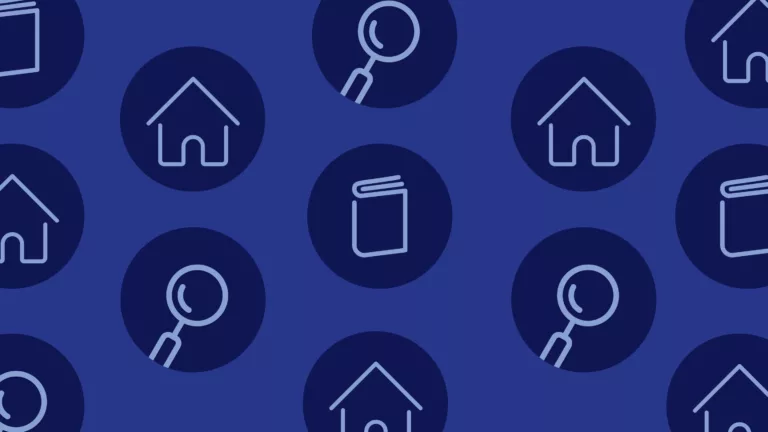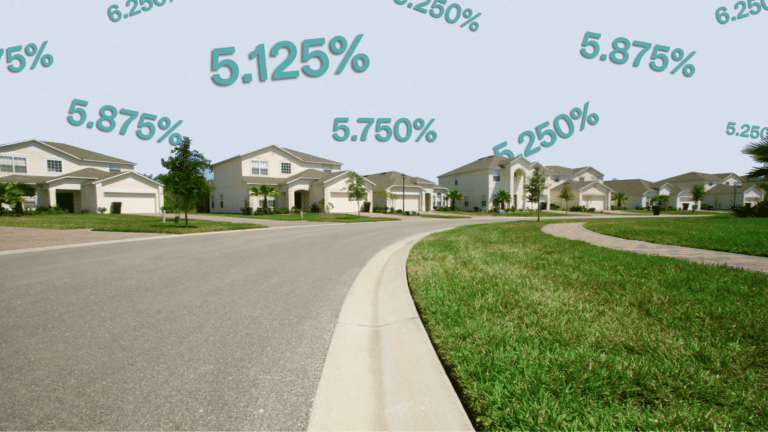The year kicked off on a more positive note, as many buyers, sellers, realtors and loan officers were encouraged by a downward trend in mortgage rates and signs of waning inflation. Over the past few weeks, we’ve seen rates zig-zag again, with volatility returning as the market tries to make sense of mixed signals around inflation and an uncertain road ahead for Fed rate hikes.
One thing is clear – rates are unlikely to dip significantly in the near-term, and many in the market are beginning to accept the reality of rates where they are, rather than waiting around for them to drop off.
If you’re wondering when rates may go down, this mainly hinges on whether inflation comes under control, or if a deepening recession requires a loosely of the XX. Even if these scenarios play out, we’re still unlikely to see rates drop to levels anywhere near what we experienced over the course of the pandemic.
In this environment, it’s worth noting that rates remain relatively reasonable historically. Know anyone who had a 15% mortgage rate in the 1980s? Read on to learn more about where rates have stood over time
Average Rates for a 30-Year Mortgage 1970 – 2020*
| 1980 – 13.74% | 1995 – 7.93% | 2010 – 4.69% |
| 1985 – 12.43% | 2000 – 8.05% | 2015 – 3.85% |
| 1990 – 10.13% | 2005 – 5.87% | 2020 – 3.10% |
While we know this data doesn’t make it any easier to meet the affordability challenges of today, it does show that the low rates we’ve experienced over the past few years are a historical anomaly in many ways.
One way to navigate the rate environment is to not focus solely on the rate you’re getting, but on the overall transaction, what you can afford to buy, and the terms that come with the loan option you’ve selected. There are many ways to decrease your upfront rate (schedule a call with us to learn more) and the rate is only one piece of the equation. If you can afford the home at current rate levels, it’s best to consider a range of factors when determining whether to move forward now versus holding out for the future, especially if you’re planning on staying in the home long-term (usually 10 years or more). Remember, the current rate environment also presents some opportunities for buyers, as sellers become more open to negotiating and competition thins out.
Tracking rates and wondering when to jump in?
Let our team know the rates and loan options you’re looking for, and we’ll let you know when things are looking favorable. Schedule a call to get started and use our Interactive Quote tool to track your options in the meantime.
Morty Resource
No matter what stage in the process you’re in (even if you’re years away from buying!) it’s important to understand your finances before you even step into an open house. This can include everything from understanding how much of your savings you’re prepared to part with for a down payment, to looking at your credit profile (and improving your score if need be) and working to pay down debt. That way when it comes time to get pre-approved and explore your options, you’re ready to go.
Check out our financial literacy resource to learn more.
Buyer Question
I live in a somewhat urban area and my budget means that most of the properties I can afford are condos. I’ve also looked at a few single-family homes, and rates seem to be lower for those. Why is this?
-Brendan S., Knoxville, TN
When it comes to looking at loan options for a condo, you can definitely expect things to look a bit different than they do for a single-family home. First off, shared community management structures like a condominium do in fact make the mortgage approval process a bit more rigorous. Lenders are evaluating the eligibility risk of the condominium separately from the credit risk of the individual borrower. This additional risk means that condo rates are typically slightly higher. Some lenders may also require you to put down a higher percentage of down payment.
To buy a condominium you will need to provide a range of materials about the condominium, such as financial statements and insurance policies. Lenders will consider the financial stability of the project, the owner’s role in decision-making within the condominium, any restrictions on occupying the unit or using common amenities, and any red flags such as inadequate insurance coverage, a history of fraudulent activity or current litigation. Buyers should also keep in mind that new condominium projects typically have different sets of requirements than established projects. New projects can be more complicated as they’re in-progress and ownership may still be open-ended, but more established projects may have different financial or insurance considerations.
One of the most important considerations is factoring in the monthly or yearly costs that come along with owning a condominium. Monthly fees (in addition to homeowner’s insurance and taxes) will factor into their overall budget and eligibility. Buyers should research (and ask to see) how much the fees have gone up in recent years, in order to get a sense of what expenses will look like long-term. This is of course something that lenders will evaluate as well.
Don’t be discouraged by the extra effort required here! Condominiums can be a great option for becoming a homeowner. Just be sure to shop around and evaluate different condo loan options using a marketplace like Morty. Our technology can also help ensure a faster approval process for condominium purchase and fewer surprises down the line.






